Lecture 7: How to Build Products Users Love, Part I
第七讲:如何打造用户喜爱的产品(上)
第7讲课程视频
![图片[1]_Lecture 7: How to Build Products Users Love, Part I 第七讲:如何打造用户喜爱的产品(上)_繁木网](http://fanmu.com/wp-content/uploads/2021/12/Y-Combinator.jpg)
讨论地址:http://www.huomen.com/topic-show-id-103.html
Alright, so when I talk about making products that users love, what it means specifically is “How do we make things that have a passionate user base, that our users are unconditionally wanting it to be successful, both on the products that we built and the companies behind them?” We’re going to go over tons of information; try not to take too many notes – mostly just try to listen. I’ll post a link to the slides on my Twitter account, and on that link, there will be a way for you to annotate the slides. So you can ask me questions, and if we don’t get to them, I’ll answer them after the talk.
好吧,当我谈到制造用户喜爱的产品时,它的具体含义是“我们如何制造拥有热情用户群的产品,我们的用户无条件地希望它成功,无论是在我们制造的产品上还是在他们背后的公司上?”我们要复习大量的信息,尽量不要记太多的笔记,主要是尽量听。我将在我的Twitter帐户上发布一个幻灯片链接,在这个链接上,您可以对幻灯片进行注释。所以你可以问我问题,如果我们还没找到,我会在谈话结束后回答。
So you guys have been listening to a lot about growth over the last several weeks, and to me, I feel like growth is fairly simple. It’s the interaction between two concepts or variables: conversion rate and churn. The gap between those two things pretty much indicates how fast you’re going to grow. Most people, especially business-type people, tend to look at this interaction in a very mathematical, calculated sort of way. Today I want to talk about these things at a more human scale because in a startup when you’re interacting with your users, you have a fairly intimate interaction in the early stages, and so I think there’s a different way of looking at this stuff in terms of how we build our products. We’ll look at a lot of different examples of that and how it’s executed well.
所以你们在过去的几周里听了很多关于成长的东西,对我来说,我觉得成长是相当简单的。这是两个概念或变量之间的相互作用:转化率和流失率。这两件事之间的差距很大程度上说明了你的成长速度。大多数人,尤其是商业型的人,倾向于用一种非常数学的、计算过的方式来看待这种互动。今天我想从更人性化的角度来讨论这些事情,因为在初创公司,当你与用户互动时,你在早期阶段有相当亲密的互动,所以我认为从我们如何构建产品的角度来看,有一种不同的方式来看待这些东西。我们将看很多不同的例子,以及如何很好地执行它。
My philosophy behind a lot of things that I teach in startups is, the best way to get to $1 billion is to focus on the values that help you get that first dollar to acquire that first user. If you get that right, everything else will take care of itself. It’s a sort of faith thing.
我在初创公司教过的很多东西背后的理念是,获得10亿美元的最好方法是专注于帮助你获得第一个用户的第一块钱的价值观。如果你做对了,其他一切都会自己解决的。这是一种信仰。
欢迎到火门网讨论:huomen.com
I came to be a partner at YC by a way of being an alumni. I went to the program of Winter 2006 (it was the second-ever program), and I built a product called Wufoo. Wufoo is an online form builder that helps you create contact forms, online surveys, and simple payment forms. it’s basically a database app that looks like it’s designed by Fisher-Price. What’s interesting though is that because it was fairly easy to use, we had customers from every industry market and vertical you can think of including a majority of the Fortune 500 companies.
作为一名校友,我成为了YC的合伙人。我参加了2006年冬季项目(这是有史以来的第二个项目),我创建了一个名为Wufoo的产品。Wufoo是一个在线表单生成器,可以帮助您创建联系表单、在线调查和简单的付款表单。它基本上是一个数据库应用程序,看起来像是由费希尔·普莱斯设计的。但有趣的是,因为它非常容易使用,我们的客户来自各个行业市场,你可以想到的垂直行业包括大多数财富500强公司。
I ran the company for five years, and then we were acquired by Survey Monkey in 2011. At the time, we were a very interesting acquisition. We were only a team of 10 people at the time, and while we acquired funding here in Silicon Valley through Y Combinator, we actually ran the company from Florida. We had no office, everyone worked from home, and we were an interesting outlier. So each dot here represents a startup (PowerPoint slide) that exited through IPO or acquisition, we are the outlier to the left. The bottom represents the funding amount that they took, and vertical axis is the valuation of the company at the time. To sum it up the average start up raises about $25 million, and the return for their investors is about 676%. Wufoo, raised about $118,000 total, and our return to our investors was about 29,561%.
我经营这家公司五年,然后在2011年被Survey Monkey收购。当时,我们是一个非常有趣的收购。当时我们只是一个10人的团队,虽然我们通过Y Combinator在硅谷获得了资金,但实际上我们是从佛罗里达州管理公司的。我们没有办公室,每个人都在家工作,我们是一个有趣的异类。所以这里的每个点代表一个通过IPO或收购退出的初创公司(PowerPoint幻灯片),我们是左边的离群者。底部代表他们获得的融资金额,纵轴是当时公司的估值。综上所述,这家初创公司平均募集资金约2500万美元,投资者的回报率约为676%。五福集团共募集资金约11.8万美元,我们对投资者的回报率约为29561%。
So a lot of people are interested in what makes Wufoo a little bit different, or how do we run the company differently. And a lot of it was focused on product. We weren’t interested in building software that people just wanted to use, that reminded you that you worked in a cubicle because it was a database app at its core. We wanted a product that people wanted to love, that people wanted to have a relationship with, and we were actually very fanatical about how we approached this idea, to the point where it was almost sort of in a science-y way. So what we said was like, “What’s interesting about startups in terms of us wanting to create things that people love, is that love and unconditional feelings, are difficult things for us to do in real life. In startups, we have to do it at scale.” So we decided to start off by asking, “How do relationships work in the real world and how can we apply them to the way we run our business and build our product that way?”
所以很多人都对是什么让五福与众不同,或者我们如何以不同的方式经营公司感兴趣。很多都集中在产品上。我们对构建人们只想使用的软件不感兴趣,这提醒你,你在一个小隔间里工作,因为它的核心是一个数据库应用程序。我们想要一个人们喜欢的产品,一个人们想与之建立关系的产品,实际上我们非常热衷于我们是如何处理这个想法的,以至于它几乎是以一种科学的方式。所以我们说的是,“创业公司有意思的是,我们想创造人们喜欢的东西,那就是爱和无条件的感觉,对我们来说,在现实生活中很难做到。在初创企业中,我们必须按规模进行。”因此,我们决定先问一句,“关系在现实世界中是如何运作的,我们如何将它们应用到我们的业务运营和产品开发中?”
We’ll go over these two metaphors: acquiring new users as if we are trying to date them, and existing users as if they are a successful marriage.
我们将讨论这两个比喻:获取新用户就像我们试图与他们约会一样,获取现有用户就像他们是成功的婚姻一样。
When it comes to dating, a lot of the things that we uncovered, had to do with first impressions. All of you often talk about your relationships in the origin story. You guys will tell me about your first kiss, how you met, how you proposed. These are the things that we say over and over again, basically the word-of-mouth stories for relationships. There are similar things that we do with companies. Human beings are relationship-manufacturing creatures. We cannot help but create, and anthropomorphize, the things we interact with over and over again. Whether it’s the cars we drive, or the clothes we wear, or the tools and softwares we use, we eventually prescribe characteristics to it, a personality, and we expected it to behave a certain way – that’s how we sort of interact with it.
说到约会,我们发现的很多事情都与第一印象有关。你们经常在《起源》里谈论你们的关系。你们会告诉我你们的初吻,你们是怎么认识的,你们是怎么求婚的。这些都是我们一遍又一遍地说的话,基本上是人际关系的口碑故事。我们对公司也有类似的做法。人类是制造关系的生物。我们不能不创造,并拟人化,我们与一次又一次互动的东西。不管是我们开的车,还是我们穿的衣服,还是我们使用的工具和软件,我们最终都会规定它的特征,一种个性,我们期望它表现出某种方式——这就是我们与它互动的方式。
First impressions are important for the start of any relationship because it’s the one we tell over and over again, right? There’s something special about how we regard that origin story. Let me give you an example. If you’re on the first date with somebody, and you’re having a nice dinner, but you catch them picking their nose, you are probably not going to have another date with them. But if you’re married to someone for about 20 to 30 years, and you catch them on the BarcaLounger digging for gold, you don’t immediately call your lawyer, you know what I mean, and say, “We have a problem here, you have to start drawing up papers for divorce.” You shrug your shoulders, and say, “At least he has a heart of gold.”
第一印象对任何一段关系的开始都很重要,因为这是我们一遍又一遍地讲述的,对吧?关于我们如何看待这个起源的故事,有些特别之处。我举个例子。如果你第一次和某人约会,而且你正在吃一顿丰盛的晚餐,但是你发现他们在挖鼻子,你可能就不会再和他们约会了。但是,如果你和一个人结婚20到30年,你发现他们在巴卡隆格挖金子,你不会马上打电话给你的律师,你知道我的意思,然后说,“我们这里有个问题,你必须开始起草离婚文件。”你耸耸肩,说,“至少他有一颗金子般的心。”
So something about first-time interactions means that the threshold was so much lower in terms of pass fail. So in software and for most products in Internet software that we use, first impressions are pretty obvious and there are things you see a lot of companies pay attention to in terms of what they send their marketing people to work on. My argument for people who are very good at product is that they discover so many other moments and make them memorable: the first email you ever get, what happens when you got your first login, the links, the advertisements, the very first time you interacted with customer support. All of those are opportunities to seduce.
因此,关于首次交互的一些东西意味着,就通过-失败而言,阈值要低得多。因此,在软件和我们使用的大多数互联网软件产品中,第一印象是非常明显的,你可以看到很多公司都在关注他们派营销人员去做什么。我对那些擅长产品的人的观点是,他们发现了很多其他的时刻,让他们难忘:你收到的第一封电子邮件,当你第一次登录时会发生什么,链接,广告,你第一次与客户支持人员互动。所有这些都是诱惑的机会。
So how do we think about making first moments? We actually took this concept from the Japanese. They actually have two words for how to describe things when you’re finished with them, in terms of saying, “is this a quality item?” The two words for quality are atarimae hinshitsu and miryokuteki hinshitsu. The first one means taken for granted quality, which basically means functionality. The last one means enchanting quality. Take for example a pen. Something has miryokuteki if the weight of the pen, the way the ink flows out of it, the way it’s viewed by the people reading the hand writing from the pen, is pleasurable both to the user of the pen and the people who experience the byproducts, taking it to the next level. Let’s start with some examples.
那么,我们如何看待开始的时刻呢?我们实际上是从日本人那里学到这个概念的。他们实际上有两个词来描述你完成任务后的事情,比如说,“这是一个高质量的项目吗?”质量的两个词是atarimae hinshitsu和miryokuteki hinshitsu。第一种是指理所当然的质量,基本上是指功能性。最后一个意味着迷人的品质。以钢笔为例。如果钢笔的重量,墨水从中流出的方式,人们从钢笔中阅读手写文字的方式,对钢笔的使用者和体验副产品的人来说都是令人愉快的,并将其提升到一个新的水平,那么有些东西就有了miryokuteki。让我们从一些例子开始。
This is Wufoo’s login link, and it has a dinosaur on it, which I think is awesome! But if you hover it, the spec has the added benefit of having a tool tip that doesn’t tell you how to log in or what it does, but basically “RARRR!” What we noticed about this in early usability stages, is that this put a smile on people’s faces, like hands down, universally. I think a lot of times when we are assessing products we never think about, “Hey, what is the emotion on the person’s face when they interact with this?”
这是五福的登录链接,上面有一只恐龙,我觉得很棒!但是如果你把它悬停在上面,规范还有一个额外的好处,那就是有一个工具提示,它不会告诉你如何登录或者它做什么,但基本上是“RARRR!”在可用性的早期阶段,我们注意到了这一点,这使人们的脸上普遍挂着微笑,就像把手放下一样。我想很多时候,当我们在评估产品时,我们从来没有想过,“嘿,当人们与这个产品互动时,他们脸上的情绪是什么?”
This is Vimeo’s launching page; this is actually a couple iterations ago, it’s the one that I find to be the most beautiful. It lets you know that when you’re starting out on this journey with them, it is going to be something different – they do this all over. If you search for the word “fart,” as you scroll up and down, it makes fart noises. There’s something different, like this site interacts with you, it’s a little bit magical, and it’s a little bit different. It’s something that you want to talk about.
这是Vimeo的启动页面;这实际上是几次迭代前,我发现它是最漂亮的。它让你知道,当你和他们一起开始这段旅程的时候,会有一些不同的事情发生——他们会从头再来。如果你搜索“放屁”这个词,当你上下滚动时,它会发出放屁的声音。有点不同,比如这个网站和你互动,有点神奇,也有点不同。这是你想谈的事。
You don’t always have to do it with design. This is a sign-up form for Cork’d, which used to be a social network for people that love to drink wine. On it, it says, “Email address- it’s also your sign in name, and has to be legit. First name – what mom calls you. Last name – what your army buddies call you. Password – something you’ll remember but hard to guess. Password confirmation – type it again, think of it as a test.” It’s literally a poem as you fill it out the form. And this is the kind of thing when you’re like, “Oh, I like the people behind this, I’m going to enjoy this experience.” Now what does it say, when you fill out a form like this, about what their personality looks like it’s going to be? And what’s disappointing to me is Yahoo forces every product and service under them to use this exact same login form.
你不必总是用设计来做。这是一个科克的注册表格,它曾经是一个社交网络的人,爱喝葡萄酒。上面写着:“电子邮件地址——也是你的登录名,必须合法。名字——妈妈叫你什么。姓-你的军友怎么称呼你。密码-一些你会记得但很难猜到的东西。密码确认——再输入一次,把它当作一个测试。“当你填写表格的时候,这简直就是一首诗。当你说,“哦,我喜欢这背后的人,我会享受这段经历。”当你填写一张这样的表格,关于他们的个性会是什么样的,它会说什么?而让我失望的是,雅虎强迫旗下的每一个产品和服务都使用完全相同的登录表单。
Flickr I thought had one of the best call-to-actions. It was, “Get in there!”
我认为Flickr是最好的行动号召之一。是“进去!”
This is for Heroku’s signup page. I think this is an older version. What’s remarkable about it is that what you start getting a feel for, is like scaling up the backend services, it’s as easy as dragging up-and-down different knobs and levers. It looks fairly easy to scale.
这是Heroku的注册页面。我认为这是一个旧版本。值得注意的是,你开始感觉到的东西,就像扩展后端服务一样,就像上下拖动不同的旋钮和杠杆一样简单。它看起来很容易扩展。
This is for a room full of computer science people; I think you’ll appreciate that. This is Chocolat, a code editor. And they only have one call to action: when the time limit is up, everything in terms of all the features is all the same, except we changed the fonts to Comic Sans, and what they’re basically saying is “Hey, we know who our users are, who our real customers are. They’re going to be the people who care about this.”
这是给一个满是计算机科学人员的房间,我想你会很感激的。这是巧克力,一个代码编辑器。而且他们只有一个行动要求:当时间限制到了,所有的功能都是一样的,只是我们把字体改成了漫画Sans,他们基本上说的是“嘿,我们知道我们的用户是谁,我们真正的客户是谁。他们将成为关心此事的人。”
This is Hurl, a website for checking HTTP requests, and sometimes the places where you get errors are opportunities for first moments. If you hit a 404, this is what you get: (Unicorn throwing up a rainbow.)
这是Hurl,一个用于检查HTTP请求的网站,有时出现错误的地方是第一时间的机会。如果你击中一个404,这就是你得到的:(独角兽抛出彩虹。)
Often times what we do is we create really beautiful marketing materials, but when you actually need documentation, we sort of skimp out on design features. This is something that happens over and over again. A company that gets this right is MailChimp. What they did was they redesigned all of their help guides so that they looked like magazines covers, and overnight basically readership goes up on all these features, and customer support for these things that help people optimize emails, goes down.
很多时候,我们所做的是创建非常漂亮的营销材料,但是当你真的需要文档时,我们会略过一些设计特征。这是反复发生的事情。一家能做到这一点的公司是MailChimp。他们所做的是重新设计了所有的帮助指南,使它们看起来像杂志封面,一夜之间基本上所有这些功能的读者人数都上升了,而这些帮助人们优化电子邮件的东西的客户支持也下降了。
Speaking of documentation, Stripe – what’s interesting about an API company, is that there is no UX. The UX is actually just documentation, and there are opportunities even in documentation to sort of enchant and amaze. One of the things that I love about them is that their examples are wonderful, but if you log into the app, one of the things that is a super pain for most people is when you’re doing most people’s APIs, is grabbing your API credentials and keys. And what shocked us is that it says, “If you are logged into the app, we automatically put your API credentials into the examples, so you only have to copy and paste once, when trying to learn their API.”
说到文档,Stripe—API公司的有趣之处在于没有UX。用户体验实际上只是文档,甚至在文档中也有机会让人着迷和惊叹。我喜欢他们的一个地方是他们的例子非常棒,但是如果你登录到这个应用程序,对大多数人来说,一件非常痛苦的事情就是当你在做大多数人的API时,抓取你的API凭证和密钥。而让我们震惊的是,它说,“如果你登录到应用程序,我们会自动将你的API凭据放入示例中,因此你只需在尝试学习他们的API时复制和粘贴一次。”
When Wufoo wanted to launch the third version of our API, we realized, “Okay finally this is good enough that we want people to build on top of it.” We were trying to figure out how we launch this out to the world that sort of has our personality behind it, because a lot of people usually do things like a programming API contest that give out iPads and iPhones; it makes you look like everyone else. So at our company, one weird value we have is that our cofounders are big medieval nuts, and we would take everyone out to Medieval Times every single year on the anniversary and founding of the company. So we said we have to do something in that flavor. We contacted the guys at armor.com, and said, “Can you forge us a custom battle axe?” We said, if you win our programming contest, you would win one. The result is, people wanted to talk about this. People wanted to say they were working on this because they wanted to say, “I am programming for a weapon.” What’s cool is we had over 25 different applications created for us, of quality and quantity that we could not have paid for on the budget and time that we had. We got things like an iPhone app, an Android app, a WordPress Plugin, and all we did was change the way people talked about our origin story of how they interacted with one of our services.
当Wufoo想要发布我们的API的第三个版本时,我们意识到,“好吧,最后,这已经足够好了,我们希望人们在它的基础上进行构建。”我们试图弄清楚我们是如何向世界发布这个版本的,它背后有我们的个性,因为很多人通常会做一些事情,比如编程API竞赛,分发ipad和iphone;这会让你看起来和其他人一样。所以在我们公司,我们有一个奇怪的价值观,就是我们的共同创始人都是中世纪的大疯子,我们每年都会在公司的周年纪念日和成立日带大家去中世纪。所以我们说我们得做点这种口味的。我们联系了现场的人装甲网“你能给我们打造一把定制战斧吗?”我们说过,如果你赢了我们的编程比赛,你就会赢一个。结果是,人们想谈论这个。人们想说他们在做这个是因为他们想说,“我在为武器编程。”很酷的是,我们有超过25个不同的应用程序为我们创建,质量和数量,我们无法支付的预算和时间,我们有。我们有iPhone应用程序、Android应用程序、Wordpress插件,我们所做的只是改变人们谈论我们的起源故事的方式,即他们如何与我们的一项服务交互。
I’m going to shorthand this by saying you should just subscribe to Little Big Details. It’s basically tons of screenshots of software that just shows that they are doing it right and being conscientious of the user and the customers.
我要简略地说,你应该订阅一些大细节。它基本上是软件的屏幕截图吨,只是表明他们做的是正确的,并认真的用户和客户。
When it comes to long-term relationships, or marriages, the only research that we ended up having to read is the stuff done by John Gottman. He’s been featured in “This American Life,” Malcolm Gladwell’s books, etc. He’s a marriage researcher up in Seattle, and he has an interesting parlor trick that he can do. He can watch a video tape of a couple fight over some issue for 15 minutes, and predict within 85% accuracy rate, whether that couple will be together or not, or divorced, in four years. If he increases that video up to an hour and asks them to also talk about their hopes and dreams, that prediction rating goes up to 94%. They showed these same video tapes to marriage counselors, successfully married couples, sociologist, psychiatrist, priests, etc. They can’t predict with random chance, whether people are going to be together or not.
当谈到长期关系或婚姻时,我们最后不得不读的唯一研究是约翰·戈特曼所做的。他曾出演过《美国生活》,马尔科姆·格拉德威尔的书,等等。他是西雅图的一名婚姻研究员,他有一个有趣的客厅技巧,他可以做到。他可以在15分钟内观看一对夫妇为某个问题争吵的录像,并在85%的准确率内预测这对夫妇在四年内是否会在一起或离婚。如果他把视频增加到一个小时,让他们也谈谈自己的希望和梦想,预测率就会上升到94%。他们给婚姻顾问、成功结婚的夫妇、社会学家、精神病医生、牧师等看了同样的录像带。他们无法随机预测人们是否会在一起。
So John Gottman understands something fundamental about how relationships work in the long term, and that basically how we fight even in the short term period can indicate the whole system and what it’s going to look like. One of the surprising things he discovered is not that successfully married people don’t fight at all; turns out, everybody fights and we all fight about the exact same things: money, kids, sex, time, and others (“Others” are things like jealousy and the in-laws.) To bring this around, you can actually attribute every single one of these to problems to things you see in customer support when you’re building out your products, so Money – this costs too much, or I’m having trouble with credit cards. Kids – users’ client. Sex – performance, how long you’re up and how fast. Others – I said was jealousy or in-laws, so that’s competition and partnerships, anything weird happening there, people are going to write to you about. And the reason I like to think about this in terms of customer support is that, in everyone’s processing of a conversion funnel, customer support is a thing that happens in between every one of the steps; it’s the reason why people don’t make it further down there; it’s the thing that prevents conversion from happening.
所以约翰·戈特曼理解了一些基本的东西,关于长期关系是如何运作的,基本上,即使在短期内,我们是如何战斗的,可以说明整个系统以及它将是什么样子。他发现的一件令人惊讶的事情并不是成功结婚的人根本不打架;事实证明,每个人都打架,我们都为同样的事情而打架:金钱、孩子、性、时间和其他(“其他”是嫉妒和姻亲之类的东西。)为了扭转这种局面,实际上,你可以把每一个问题都归因于你在开发产品时在客户支持中看到的问题,所以钱——这太贵了,或者我在信用卡上遇到了麻烦。儿童-用户的客户。性爱表演,你起床的时间和速度。其他人-我说是嫉妒或姻亲,所以这是竞争和伙伴关系,任何奇怪的事情发生在那里,人们会写信给你。我喜欢从客户支持的角度来思考这个问题的原因是,在每个人处理转换漏斗的过程中,客户支持是发生在每一个步骤之间的事情;这就是为什么人们没有在那里走得更远的原因;这是阻止转换发生的事情。
Now as we were thinking through all of these ideas, and as we were building up the company, we realized that there’s a big problem with how everyone starts up their company or builds up their engineering teams. There’s a broken feedback loop there. People are divorced from the consequences of their actions. This is a result from the natural evolution of how most companies get founded, especially by technical cofounders. Before launch, it is a time of bliss, Nirvana, and opportunity. Nothing that you do is wrong. By your hand, which you feel is like God, every line you write and every code you write feels perfect; it’s genius to you. The thing that happens is after launch, reality sets in, and all these other tasks come in to play; things that we have to deal with. Now what technical cofounders want to do is get back to that initial state, so what we often see is the company starts siloing off these other things that makes a startup company real, and have other people do them. In our minds these other tasks are inferior, and we have other people in the company do them.
现在,当我们思考所有这些想法时,当我们建立公司时,我们意识到每个人如何建立自己的公司或工程团队都有一个很大的问题。那里的反馈回路坏了。人们对自己行为的后果置之不理。这是大多数公司成立方式自然演变的结果,尤其是技术联合创始人。在发射之前,这是一个极乐、涅盘和机遇的时刻。你所做的一切都不是错的。用你的手,你感觉就像上帝,你写的每一行每一个代码都感觉完美,对你来说是天才。发生的事情是在发射之后,现实开始了,所有这些其他的任务开始了;我们必须处理的事情。现在,技术联合创始人想要做的是回到最初的状态,所以我们经常看到的是,公司开始孤立这些使初创公司成为现实的东西,并让其他人去做。在我们的心目中,这些其他的任务是低劣的,我们有其他人在公司做他们。
So for us, what we’re trying to figure out is how we change software development so that we inject some values that we don’t talk about enough, like responsibility, accountability, humility, and modesty. We call this SDD (Support Driven Development). It’s a way of creating high-quality software, but it’s super simple; you don’t need a bunch of Post-it notes. All you have to do is make everyone do customer support. What you end up having is you fix the feedback. The people who built the software are the ones supporting it, and you get all these nice benefits as a result.
所以对我们来说,我们试图弄清楚的是我们如何改变软件开发,从而注入一些我们谈得不够多的价值观,比如责任、责任、谦逊和谦虚。我们称之为SDD(支持驱动开发)。这是一种创建高质量软件的方法,但它非常简单;您不需要一堆便利贴。你要做的就是让每个人都做客户支持。你最终得到的是你修正了反馈。开发这个软件的人就是支持它的人,结果你得到了所有这些好处。
欢迎到火门网讨论:huomen.com
One of them is support responsible developers and designers. When people built the stuff, they give the very best support. Now we are not the first people to think of this. Paul English was a big supporter of this in Kayak. What he did was install a red customer support phone line in the middle of the engineering floor, and it would just ring with customer support calls. People would often ask him “Why would you pay engineers $120,000 or more to do something that you can pay other people a fraction of.” He said, “Well, after the second or third time that the phone rings, and the engineer get the same problem, they stop what they’re doing, they fix the bug, and they stop getting phone calls about it.” It’s a way of having QA in a sort of nice, elegant solution.
其中之一是支持负责任的开发人员和设计人员。当人们建造这些东西时,他们会给予最好的支持。现在我们不是第一个想到这个的人。保罗英格利什是皮划艇运动的一个大支持者。他所做的是在工程楼层中间安装一条红色的客户支持电话线,它只会响起客户支持电话。人们经常会问他:“为什么你要付给工程师12万美元或更多的钱去做一些你可以付给其他人一小部分钱的事情呢?”他说,“好吧,在第二次或第三次电话铃响之后,工程师遇到同样的问题,他们就停止了他们正在做的事情,他们修复了错误,他们就不再接到关于它的电话。”这是一种解决问题的方法有一个很好的,优雅的解决方案的质量保证。
Now, John Gottman talks about the reason that we often break up with one another is due to four major causes. They are warning signs. He calls them the Four Horsemen: criticism, contempt, defensiveness, stonewalling. Criticism is basically people starting to focus, not just on the specific issue at hand, but on the over arching issues like “You never listen to users” or “You never think about us” all the time. Contempt is when somebody is purposely trying to insult another person. Defensiveness is not trying to take accountability, or trying to make excuses for their actions. Stonewalling is basically shutting down. Stonewalling according to John Gottman, is one of the worst things we can do in a relationship. Often times we don’t worry about these things in customer support, criticism or contempt. Defensiveness, you see this all the time especially in companies as they get older. But stonewalling, this is something I see happening with startups all the time. You get a bunch of customer support calls coming in, and you just think, “I don’t need to answer, I don’t need to respond.” That act of not even getting back to them is one of the worst things you can do, and it’s probably some of the biggest causes of churn in the early stages of startups.
现在,约翰戈特曼谈到我们经常分手的原因有四个主要原因。它们是警告信号。他称他们为四个骑士:批评,蔑视,防御,石墙。批评基本上是人们开始关注,而不仅仅是手头上的具体问题,而是像“你从来不听用户的话”或“你从来没有想过我们”这样的高深莫测的问题。蔑视是指有人故意侮辱他人。防御不是试图承担责任,也不是试图为自己的行为找借口。石墙集团基本上已经关门了。约翰戈特曼认为,拖延是我们在一段关系中能做的最糟糕的事情之一。很多时候,我们不担心这些事情在客户支持,批评或蔑视。防御性,你经常会看到这一点,尤其是在公司变老的时候。但是,我一直看到创业公司在做这种事。你接到一大堆客户支持电话,你只会想,“我不需要回答,我不需要回复。”这种连回复都不回的行为是你能做的最糟糕的事情之一,这可能是创业初期客户流失的一些最大原因。
欢迎到火门网讨论:huomen.com
This is how support worked out with Wufoo. When we were acquired we had about 500,000 users on the system, 5 million people used Wufoo forms and reports whether they knew it or not, and all those people got support from the same 10 people, and usually there was one person dedicated to support a day, for any shift. Resulting in about 400 issues a week, that’s about 800 emails. But our response time from 9 AM to 9 PM was between 7 to 12 minutes, from 9 PM to midnight was an hour, and then on the weekend it would be no longer than 24 hours. We carried this up all the way up to the scale.
这就是支持如何与五福。当我们被收购时,我们的系统上有大约500000个用户,500万人使用Wufoo表单和报告,不管他们是否知道,所有这些人都得到了相同的10个人的支持,通常每天都有一个人专门支持任何一个班次。每周大约有400个问题,也就是800封电子邮件。但我们从早上9点到晚上9点的反应时间是7到12分钟,从晚上9点到午夜是一个小时,然后在周末是不超过24小时。我们一路把它放大到刻度。
What a lot of people talk about and often forget about Airbnb, is how they did this interesting thing where they went up to New York, and offered professional photography, and the founders would go up there and actually take pictures of the people’s apartments to help them sell more, focusing on the stories about conversion. What most people don’t realize is, a lot of times when I saw Joe in the early times of Airbnb, he had a phone headset stuck to his head all the time because he was doing phone support nonstop.
很多人谈论和经常忘记Airbnb的是,他们是如何做这件有趣的事情的,他们去了纽约,提供专业摄影,创始人会去那里,实际拍摄人们的公寓,帮助他们销售更多,重点是关于转换的故事。大多数人没有意识到的是,很多时候,当我在Airbnb早期看到Joe时,他总是把一个电话耳机贴在头上,因为他不停地做电话支持。
Churn is the story we don’t like to talk about. Airbnb’s growth really started picking up when they figured out how to match capacity to the demand or the phone calls they were getting into their support system.
搅局是我们不喜欢谈论的话题。Airbnb的增长真的开始回升,当他们发现如何匹配容量的需求或电话进入他们的支持系统。
At Wufoo we actually constantly did experiments around support because we were so obsessed with it. One experiment we did was, we heard someone here do a talk about how there’s a disconnect between the emotions that we have when we need help, and the content and the reaction we get from people when we get help to people, especially online, because they just don’t see those nonverbal cues. So she said, unless there’s face recognition on the web, we are just always going to be disconnected from our users. Our feeling was like, “We’re not face recognition experts, but we think there’s another way of getting empathy.” So, as form builders we added a drop-down, and what we said was, “what’s your emotional state.” Our hypothesis was nobody’s going to fill this out; we thought this was going to be a lame experiment, but we’ll see how it goes. It turned out that this field was filled out 75.8% of the time. The Browser Type drop-down field in comparison was filled out 78.1% of the time. So people were basically telling us, “For my technical support issue, how I feel about this problem is just as important as all the technical details you need to figure out in order to debug it.”
事实上,在五福,我们经常围绕着支持做实验,因为我们对支持如此痴迷。我们做的一个实验是,我们听到这里有人说,当我们需要帮助的时候,我们的情绪是如何脱节的,当我们得到帮助的时候,人们的内容和反应是如何脱节的,尤其是在网上,因为他们看不到那些非语言的暗示。所以她说,除非网络上有人脸识别,否则我们总是会与用户断开联系。我们的感觉是,“我们不是人脸识别专家,但我们认为还有另一种方法可以获得同理心。”因此,作为表单构建者,我们添加了一个下拉列表,我们说的是,“你的情绪状态如何。”我们的假设是没有人会填写这个;我们认为这将是一个蹩脚的实验,但我们会看到它是如何进行的。结果这个字段有75.8%的时间被填写。比较中的浏览器类型下拉字段的填写率为78.1%。所以人们基本上都在告诉我们,“对于我的技术支持问题,我对这个问题的感觉和调试它所需要的所有技术细节一样重要。”
We didn’t prioritize things or triage things by emotion, so for the most part people didn’t game the system. One of the interesting byproducts of it was that we noticed that people started being nicer to us. We went back and looked at the data, did some text analysis and realized when it comes to communicating with people over written words like email, there’s only three ways in which you show strong emotions: exclamation marks, curse words, AND ALL CAPS. Sure enough, on all three of those metrics, they’ve gone down in the way people were talking to us in customer support. Once people had a simple outlet for their emotions, it made them a lot more rational, and a made our jobs much more pleasant as a result.
我们没有根据情绪来区分事情的优先顺序,也没有对事情进行分类,所以大部分人都没有玩这个游戏。其中一个有趣的副产品是,我们注意到人们开始对我们好起来。我们回头看了数据,做了一些文字分析,意识到当你用电子邮件这样的文字与人交流时,只有三种方式能让你表现出强烈的情绪:感叹号、诅咒词和所有的大写字母。果然,在所有这三个指标上,客户支持部门与我们交谈的方式都有所下降。一旦人们有了一个简单的发泄情绪的渠道,他们就会变得更加理性,这样一来,我们的工作也就更加愉快了。
The other byproduct that is awesome is that you actually build better software when you do this – far better software. This is actually backed up by a whole bunch of research. Jared Spool, at User Interface Engineer (one of the biggest players in the space) says that there’s a direct correlation to how much time we spend directly exposed to users and how good our designs get. He said it has to come in this specific way. It has to be a direct exposure. It can’t be something where someone generates a report or through a graph. You have to be interacting with them in somewhat real time. It has to be a minimum of every six weeks, and it has to be for at least two hours; otherwise your software will get worse over time. Our developers, the people who are with Wufoo, are getting exposed to our users 4 to 8 hours every single week. What it does is that it changes the way you sort of build software.
另一个令人敬畏的副产品是,当你这样做的时候,你实际上构建了更好的软件——更好的软件。这实际上得到了大量研究的支持。Jared Spool,用户界面工程师(该领域最大的参与者之一)说,我们直接接触用户的时间和我们的设计有多好有着直接的关系。他说它必须以这种特定的方式出现。必须是直接接触。它不可能是有人生成报告或通过图表。你必须和他们实时互动。它必须至少每六周一次,而且必须至少持续两个小时;否则你的软件会随着时间的推移变得更糟。我们的开发者,Wufoo的员工,每周都要接触我们的用户4到8个小时。它所做的就是改变了你构建软件的方式。
Jared Spool has another way of talking about how we build products. Imagine that this represents all the knowledge needed to use your app on a spectrum (PowerPoint slide). This is like no knowledge (far-left) and this is all the knowledge needed (far-right). These two lines are pretty much your interaction with users. This is currently where their knowledge point is (PowerPoint slide), and this is the target point where you’re trying to get them to. The gap between the two is called the knowledge gap as Spool calls it. And what’s interesting about this is there’s only two ways to fix this. That gap represents how intuitive your app is. You either get the user to increase their knowledge or decrease the amount of knowledge that’s needed to use the application. And often times as engineers or people who build and work on these products we think let’s add new features. New features only means let’s increase the knowledge gap.
Jared Spool用另一种方式谈论我们如何构建产品。想象一下,这代表了在频谱上使用应用程序所需的所有知识(PowerPoint幻灯片)。这就像没有知识(最左边),这是所有需要的知识(最右边)。这两条线几乎就是你与用户的互动。这是他们目前的知识点(PowerPoint幻灯片),这是你试图让他们达到的目标点。两者之间的差距被称为Spool所称的知识差距。有趣的是只有两种方法可以解决这个问题。这个差距代表了你的应用程序有多直观。您要么让用户增加他们的知识,要么减少使用应用程序所需的知识量。通常,作为工程师或开发这些产品的人,我们认为让我们添加新功能。新功能只意味着让我们扩大知识差距。
So for us we actually focused on the other direction. What that meant is that we spent 30% of our engineering time on internal tools to help with our customer support. But often times it was spent on helping people help themselves, like frequently asked questions, or tooltips; things like if you just click the help link, instead of taking you to the generic help documentation page, you go to the specific page that’s going to be the most appropriate for what you’re working on. We redesigned our documentation over and over again, A/B tested it constantly. One iteration of our documentation page reduced customer support by 30% overnight. It’s one of those things where overnight, all the people that work on the product immediately had 30% less work to do.
所以对我们来说,我们实际上关注的是另一个方向。这意味着我们将30%的工程时间花在内部工具上,以帮助客户支持。但通常情况下,它都是用来帮助人们自助的,比如常见问题解答或工具提示;比如,如果你只需单击“帮助”链接,而不是转到通用帮助文档页,而是转到最适合你所从事工作的特定页。我们一次又一次地重新设计我们的文档,A/B不断地测试它。我们文档页面的一次迭代一夜之间就减少了30%的客户支持。这是一个一夜之间,所有的人工作的产品立即有30%的工作要做。
What happens if you have everyone working on customer support constantly? I talked about in the very beginning that growth is a function of conversion and churn. This is Wufoo’s growth curve for the first five years (PowerPoint slide). What’s interesting is that we paid no money on advertising or marketing; all of it was done by word-of-mouth growth. The interaction between new users and downgrades are this (PowerPoint slide). It’s so slight what it takes, that gap, making that work. What a lot of people keep forgetting is that there’s almost no difference between an increase in conversion rate, 1% increase, and 1% decrease in churn; they do the exact same thing to your growth.; however, the latter is actually much easier to do, and much cheaper to do. And a lot of times we neglect this until way far along, and we usually have our B team work on these projects and services.
如果每个人都在不断地为客户支持工作,会发生什么?我在一开始就谈到了增长是转化和搅动的函数。这是五福公司前五年的增长曲线(PowerPoint幻灯片)。有趣的是,我们在广告和市场营销上没有花钱;所有这些都是通过口碑增长来实现的。新用户和降级之间的交互如下(PowerPoint幻灯片)。它是如此微小,它需要什么,差距,使这项工作。很多人一直忘记的是,转化率的提高、1%的增长和1%的流失率的降低几乎没有区别;它们对你的成长起着完全相同的作用;然而,后者实际上更容易做到,而且更便宜。很多时候我们忽略了这一点,直到很久以前,我们通常有我们的B团队在这些项目和服务上工作。
This is actually not one of the graphs we tracked most of the time at Wufoo, it’s not even the one I’m proud of. This is the one I’m proud of because even though we had this nice, awesome curve of growth, this is what allowed us to scale, keep the company small, and have an awesome culture. And that required doing a lot of these things to help people do what they need.
事实上,这不是我们在五福大部分时间跟踪的图表之一,它甚至不是我引以为豪的图表。这正是我引以为豪的地方,因为尽管我们有着良好的、令人敬畏的增长曲线,但这正是我们得以扩大规模、保持公司规模和拥有令人敬畏的文化的原因。这就需要做很多这样的事情来帮助人们做他们需要的事情。
So John Gottman noticed that there was a different type of behavior for relationships, and why people divorced. Basically there were these subsets of people who stayed together 10 to 15 years and all of a sudden divorced. None of the other indicators would show that this was going to happen. He was looking through the data and realized, “Oh there’s no passion, there’s no fire between these people.” When it comes to relationships, they kind of follow the second law of thermodynamics: In an enclosed energy system, things tend to run down, so you constantly have to be putting energy and effort back into it. The way a lot of people think showing people that “I care about you” in products and companies is by doing things like creating a blog or making a newsletter. The thing is we look at these rates and basically it was such a small percentage of our active users, most of them had no idea about the awesome things that we were doing for them. So we built a new tool and called it the Wufoo Alert System. It allowed us to timestamp every new feature that we are building for users, and that every time they would login we would look at the difference between their log in time, or last login in time, and the new features that were implemented, and they would have this message show up, “Hey since you’ve been gone, here’s all the awesome stuff that Wufoo did for you.” Hands-down, this was the most talked about feature that I heard every time I went out to talk to users. They would say things like, “Dude I love that ‘Since you’ve been gone’ thing. Even though I pay the same amount every single month, you guys are doing something for me almost every week. It’s totally awesome; it makes me feel like I’m getting maximum value.”
所以约翰·戈特曼注意到,在人际关系中有一种不同类型的行为,以及人们离婚的原因。基本上有这样的人,他们在一起10到15年,突然离婚。其他指标都无法表明这一情况会发生。他翻阅了数据,意识到,“哦,这些人之间没有激情,没有激情。”当谈到关系时,他们有点遵循热力学第二定律:在一个封闭的能量系统中,事情往往会减少,所以你必须不断地把能量和努力放回到其中。很多人认为,在产品和公司中向人们展示“我关心你”的方式是通过创建博客或制作时事通讯。问题是,我们看看这些比率,基本上是我们的活跃用户的一小部分,他们中的大多数人不知道我们为他们做了什么了不起的事情。因此,我们建立了一个新的工具,并称之为Wufoo警报系统。它允许我们在为用户构建的每个新功能上加上时间戳,并且每次他们登录时,我们都会查看他们的登录时间,或者最后一次登录时间,以及实现的新功能之间的差异,他们会看到这样一条消息,“嘿,既然你已经离开了,下面是武福为你做的所有很棒的事情,“手把手放下来,这是我每次出去和用户交谈时听到的最受欢迎的功能。他们会说,“哥们儿,我喜欢‘自从你走了’这句话。尽管我每个月都付同样的钱,但你们几乎每周都在为我做一些事情。这真是太棒了,它让我觉得我得到了最大的价值。”
The other thing that we did in addition to having everyone support the people that paid their paycheck, is have them say “thank you.” And this was in large part due to us injecting humility and modesty into the equation. Every single Friday we would get together, we would write simple handwritten thank you cards to our users. And I know there are tons of people who would not be sort of excited about doing this; it was a ritual that made all the difference in terms of like having a team that was very tightly knit, and working on stuff that they really cared about. They constantly knew what the mission was for, and why we sort of did what we did. These aren’t fancy thank you cards; they’re just simple handwritten stuff on index cards, we threw in a sticker, and slapped on a dinosaur on the front of it.
我们所做的另一件事,除了让每个人都支持那些支付薪水的人之外,就是让他们说“谢谢”。这在很大程度上是因为我们在等式中注入了谦逊和谦虚。每个星期五我们都会聚在一起,给我们的用户写简单的手写感谢卡。我知道有很多人不会对这样做感到兴奋;这是一种仪式,它使所有的不同,就像有一个非常紧密的团队,并致力于他们真正关心的事情。他们总是知道我们的任务是为了什么,以及我们为什么要这么做。这些不是花哨的感谢卡;它们只是索引卡上简单的手写内容,我们在卡片上贴了一个标签,在它的正面贴了一个恐龙。
What’s interesting is we started this practice as a result of the early days of starting Wufoo. Chris, Ryan, and I were talking to try to figure out what we were going to do to show users that we appreciated them around Christmas, and Chris came up with this idea where he said, “Hey guys, a couple years ago my mom made me write thank you letters to all my relatives for my Christmas presents, and I really didn’t like to do it, but the following year all my presents were super good… so I think we should try this for our business and see how it goes.”
有趣的是,我们之所以开始这项实践,是因为我们在创办五福的初期。克里斯、瑞安和我正在讨论如何向用户展示我们在圣诞节前后对他们的感激之情,克里斯想出了一个主意,他说:“嘿,伙计们,几年前,我妈妈让我给所有亲戚写感谢信,感谢他们送我的圣诞礼物,我真的不喜欢这样做,但是第二年我所有的礼物都非常好。。。因此,我认为我们应该为我们的业务试一试,看看情况如何。”
So that first year we wrote handwritten Christmas cards to all of our users that first year. Second year rolls around, and we have too many customers with just the three founders. We were thinking, “We’re kind of screwed; we don’t know what we’re going to do.” Well, we read a book called The Ultimate Question and in it, he talks about focusing on your most profitable users; if you just take care of them, things will work out. So we thought, “That will work out, that’s scalable.” Basically we only wrote to our highest-paying customers. So January rolls around that second year and one of our longtime loyal users writes to us. He basically says, “Hey guys I really loved the Christmas card you guys sent me the first year, and I just wanted you to know, I haven’t received my second card yet and I’m just looking forward to it; I know you didn’t forget about me. Thanks a lot.” So we were like, fuck. The best way to exceed expectations is not to set any in the beginning; we were sort of in this conundrum. What we decided after thinking about it for a while was that we had to stop doing it just one time a year; it needs to be something that happens every sort of week. And even though we’ll never catch up to all of our customers, just a practice of doing it will make all the difference.
所以第一年我们给所有用户写了手写的圣诞卡。第二年就要过去了,我们的客户太多了,只有三位创始人。我们在想,“我们有点搞砸了;我们不知道我们要做什么。”好吧,我们读了一本名为《终极问题》的书,在书中,他谈到关注你最赚钱的用户;如果你能照顾好他们,事情会有结果的。所以我们想,“那会成功的,那是可伸缩的。”基本上,我们只给我们收入最高的客户写信。所以在第二年的一月份,我们的一位长期忠实用户给我们写信。他基本上是这样说的:“嘿,伙计们,我真的很喜欢你们第一年寄给我的圣诞卡,我只是想让你们知道,我还没有收到我的第二张贺卡,我只是期待着它;我知道你们没有忘记我。多谢。”所以我们就像,操。超越期望的最好方法是不要在一开始就设定任何目标;我们在某种程度上陷入了这个难题。我们考虑了一段时间后决定,我们必须停止一年只做一次这样的事情;它需要每周都发生。尽管我们永远也赶不上所有的客户,但只要实践一下,就会有很大的不同。
I talked a lot about lovey-dovey, touchy-feely stuff that I think a lot of engineers don’t like to think about too often, so I’ll end on hard business data or research. There’s an article that was put out by the Harvard Business Review several years ago by Michael Treacy and Fred Wiersema and in it they talk about the discipline of market leaders. They say there’s only three ways that you achieve market dominance, and depending on how you want to achieve that market dominance, you have to organize your company in a very specific way: best price, best product, and best overall solution. For best price, you focus on logistics, so Wal-Mart and Amazon. If you want to be the best product out there, you focus on R&D, Apple is usually a quintessential example of that. Best overall solution is about being customer intimate. This is the path that you see all luxury brands follow, as well as the hospitality industry. What I love about this path towards market dominance is that the third one is the only one that everyone can do at any stage of their company. It requires almost no money to get started with it. It usually just requires a little bit of humility and some manners. And as a result, you can achieve the success of any other people in of your market. That’s all I got, thank you very much.
我谈了很多关于可爱的,多愁善感的东西,我认为很多工程师不喜欢想太多,所以我将结束硬业务数据或研究。几年前,《哈佛商业评论》发表了一篇文章,作者是Michael Treacy和Fred Wiersema,他们在文章中谈到了市场领导者的纪律。他们说,只有三种方式可以让你获得市场支配地位,而这取决于你想如何获得市场支配地位,你必须以一种非常具体的方式来组织你的公司:最好的价格、最好的产品和最好的整体解决方案。为了获得最好的价格,你专注于物流,所以沃尔玛和亚马逊。如果你想成为最好的产品,你就要专注于研发,苹果通常就是一个典型的例子。最好的整体解决方案是与客户保持亲密关系。这是所有奢侈品牌以及酒店业都遵循的道路。我喜欢这条走向市场主导的道路,因为第三条道路是每个人在公司任何阶段都能做到的唯一道路。它几乎不需要钱就可以开始了。它通常只需要一点谦逊和一些礼貌。因此,你可以取得任何其他人在你的市场的成功。我只有这些,非常感谢。
Q: So what do you do when you have a product with many different types of users? How do you build one product that all these users love?
Q: 那么,当你的产品有许多不同类型的用户时,你会怎么做呢?你如何打造一款所有这些用户都喜欢的产品?
A: There is an interesting fine line for that. What I usually tell people is focus on those who are the most passionate, especially in the early stages. Whatever niche it’s going to be in, that’s where I’m going to focus on completely. I think Ben Silverman from Pinterest started off with design bloggers. Tailor your thing for them, and eventually you’ll figure out universal values that will appeal to a lot of other people. So just start one at a time. And a lot of examples that you see up there, a lot of companies make the mistake of just thinking “Oh I’ll just make my app funny.” Humor is like really difficult to do. When you want to shoot for something witty, you have to get functionality right. So like the Japanese quality. If you don’t have atarimae, don’t try to do anything witty, because it’ll backfire. So hands down our number one focus in Wufoo was to make everything as easy to use as possible; everything else was just polish.
A: 这有一条有趣的细线。我通常告诉人们的是关注那些最有激情的人,尤其是在早期阶段。不管它会在什么样的利基市场,这就是我要完全关注的地方。我想Pinterest的本·西尔弗曼是从设计博客开始的。为他们量身定做你的东西,最终你会发现普世价值观会吸引很多人。所以一次只开始一个。你在上面看到的很多例子,很多公司都会错误地认为“哦,我会让我的应用程序变得有趣。”幽默真的很难做到。当你想拍摄一些机智的东西,你必须得到正确的功能。所以喜欢日本的品质。如果你没有共济失调,不要试图做任何诙谐的事,因为这会适得其反。因此,我们在五福的首要目标是使一切尽可能容易使用,其他一切都只是擦亮。
Q: How do we balance being obsessed with working on product with all the other skills that are needed by a company, such as marketing, branding, etc?
Q: 我们如何平衡沉迷于产品开发与公司所需的其他技能,如营销、品牌推广等?
A: If you’re working on product, you should also always have this flip-side where you’re talking to users. For us inside of Wufoo, the way we got people to talk to users was through customer support. They got to see firsthand whether the features worked or not, and it also impacted everyone else in the company because everyone had a customer support shift, so they had a social incentive to make everything work. There should be no point where you are only focused on product. You should always have time where you work on product, and then you see what users say to you – like ongoing virtual feedback. So be careful when you don’t have that.
A: 如果你在做产品的话,你也应该在和用户交谈的时候,始终保持这个反面。对于我们Wufoo内部来说,让人们与用户交谈的方式是通过客户支持。他们第一手了解了这些特性是否有效,这也影响了公司里的其他所有人,因为每个人都有一个客户支持轮班,所以他们有一个社会激励,让一切都能正常工作。你不应该只关注产品。你应该总是有时间在你的产品上工作,然后你看到用户对你说什么-比如持续的虚拟反馈。所以当你没有的时候要小心。
My feeling on marketing and sales, my feeling is marketing and sales is a tax you pay because you haven’t made your product remarkable. Word-of-mouth is the easiest kind of growth, and it’s how a lot of the great companies grow. Figure out how to have a story that people want to tell about your product where they are the most interesting one at the dinner table. And then that person is your sales person. That person is your sales force for you.
我对市场营销和销售的感觉,我的感觉是市场营销和销售是一种税,因为你没有使你的产品引人注目。口碑是最简单的增长方式,很多伟大的公司都是这样成长的。找出一个人们想讲的关于你的产品的故事,在餐桌上他们最感兴趣的地方。然后那个人就是你的销售人员。那个人是你的销售人员。
Q: How do you make a decision on product and communicate that with your engineering team when there are lots of different directions to go?
Q: 当有很多不同的方向要走的时候,你如何对产品做出决定并与你的工程团队沟通?
A: We just looked at customer support, which is really easy because you see what people are having the most amount of trouble with. You cannot help but get feature requests from people. No matter whatever openings you have in your product or app, people will jam feature requests in there, so you’re going to know what they want. Your job as a product person and an engineer is to not just do what they say, because that way you’ll just be a slave. You have to figure out and solve what they really want, that deep underlying reason. The thing is if everyone wants to have a different way to go, then ultimately someone’s going to figure something out. But also, make the smallest version of each little idea, no longer than 1 to 2 weeks to build it, so you can try it out to see what works and what doesn’t. It’s dangerous to have multiple product directions that require a lot of time to figure out.
A: 我们只看了一下客户支持,这很简单,因为你可以看到人们在哪些方面遇到的麻烦最多。你不能不从人们那里得到功能请求。无论你的产品或应用程序中有什么空缺,人们都会在那里阻塞功能请求,所以你会知道他们想要什么。作为一个产品人员和工程师,你的工作不仅仅是按照他们说的去做,因为那样你就成了一个奴隶。你必须找出并解决他们真正想要的,深层次的原因。问题是,如果每个人都想有一个不同的方式去,那么最终有人会想出一些办法。同时,把每一个小创意都做一个最小的版本,不超过1到2周的时间来构建,这样你就可以试试看哪些可行,哪些不可行。有多个产品方向需要花很多时间才能弄清楚是很危险的。
Q: Can you relay the story about how the King for a Day thing was good at Wufoo?
Q: 你能转述一个关于国王一天的事是如何在五福好的故事吗?
A: Yeah, okay so I don’t like hackathons. I think they sort of suck in terms of those done inside of companies because you spend like 48 hours working really hard on something that you’re really passionate about, and 99% of them never make it out to production. It’s super sad. So we came up with an idea called “King for a Day.” It worked over the weekend. How it worked is someone randomly in the company got drawn and they got to be the king. The king got to tell everyone else what to do on product. So everything that was bothering them about Wufoo or any other feature that they wanted to have built, they got engineering, marketing, and advertising resources of everyone in the company to make it happen. And of course we worked with them to figure out what we could do in 48 hours. We would do this one to two times a year. It was a huge hit and a boost to morale because what people most loved, was working on things that they felt made a difference, like, I made a difference to the app. So for us, that’s one way that we would divide time for product direction. Sometimes, the people that work for you are the people who have the strongest opinions about where the product should go. And that’s a good way to democratize it a little bit, by rotating it around.
A: 是的,好吧,所以我不喜欢马拉松。我认为他们在公司内部做的事情上有点差劲,因为你花了48小时的时间在你真正热爱的事情上,而其中99%的人从来没有成功过。太可悲了。所以我们想出了一个叫“一天之王”的主意,这个主意在周末奏效了。它的工作原理是公司里有人随机抽签,他们一定是国王。国王得告诉其他人该怎么做。因此,所有困扰他们的关于Wufoo或任何其他他们想要构建的特性的事情,他们都得到了公司每个人的工程、营销和广告资源来实现。当然,我们和他们合作,想办法在48小时内做些什么。我们一年做一到两次。这是一个巨大的打击和鼓舞士气,因为人们最喜欢的,是工作的东西,他们觉得有不同,比如,我做了不同的应用程序。所以对我们来说,这是一种划分产品方向时间的方法。有时候,为你工作的人是那些对产品应该走向有最强烈意见的人。这是一个民主化的好方法,通过旋转它。
Q: You said you guys all work from home, which usually seems like a nightmare. How did you make that work?
Q: 你说你们都在家工作,这看起来像是噩梦。你是怎么做到的?
A: We all work from home, and we all work around the Tampa Bay area. We would allow anyone to work from anywhere but usually as we tried to recruit them and meet our team, they usually decided to come and move here anyway. Remote working is especially tricky. A lot of people like to romanticize it, especially people who are employees, but the thing is an office gives you a lot of benefits and efficiencies that you now have to compensate for when you have remote working. But remote working also has these sort of efficiencies. For example, I don’t have to worry about my employees losing two hours of their day to commuting. So the biggest thing we had to do for remote working is to respect people’s time. The way we had it set up is we actually had a 4 1/2 day workweek at Wufoo; half-day on Friday was for all the meetings and stuff. We said, no biz dev meetings, no talking with other outside parties. They’d have to be done on Friday, on that half-day; they couldn’t be done in the middle of the week. And then also one day of everyone was already dedicated to customer support. So everyone in our company effectively only had three days each week to actually build and work on whatever they were doing. But I actually firmly believe that if you have three solid days, 8 to 10 hours, when you’re only working on what you need to build, you can get a ton of shit done. So, what we said was, you have to respect everyone’s time during that three day period.
A: 我们都在家工作,我们都在坦帕湾地区工作。我们会允许任何人从任何地方工作,但通常当我们试图招募他们,并满足我们的团队,他们通常会决定来这里移动无论如何。远程工作尤其棘手。很多人喜欢把它浪漫化,尤其是员工,但问题是办公室给了你很多好处和效率,而当你有远程工作时,你现在必须补偿这些好处和效率。但是远程工作也有这样的效率。例如,我不必担心我的员工每天因上下班而损失两个小时。因此,我们在远程工作中要做的最大的事情就是尊重人们的时间。我们安排的方式是,我们实际上每周在五福工作4天半;周五的半天是所有会议和其他事情的时间。我们说了,不要开商务会议,不要和其他人交谈。他们必须在星期五,在那半天完成;他们不能在一周中完成。而且还有一天大家都已经在致力于客户支持了。所以我们公司的每个人实际上每周只有三天的时间来构建和完成他们正在做的事情。但我坚信如果你有三天,八到十个小时的时间,当你只做你需要做的事情的时候,你可以完成一大堆的工作。所以,我们说的是,在这三天的时间里,你必须尊重每个人的时间。
What we came up with was a 15 minute rule. You could have a chat or a phone call with someone, but it could last no longer than 15 minutes. So if you had some complicated issue that you couldn’t figure out, at 15 minutes you are to immediately table that item, and have us discuss it on Friday. You’d move on to the next item on your list. I would say 90% of the time, the item never got brought up on Friday, because usually what would happen is people would sleep on it, and then you would magically say “Hey I found a solution!” Or “Hey that’s not a big problem whatsoever.” Most problems inside a company don’t need to be solved in real time or right away. The only things are like when the site is down or when payments aren’t working. Everything outside of that is kind of luxury. So focus on your priorities as much as possible, and as a result our 10 person team did far more than many many other companies.
我们想出了一个15分钟的规则。你可以和某人聊天或打电话,但不能超过15分钟。因此,如果你有一些复杂的问题,你不能弄清楚,在15分钟,你要立即表上的项目,并让我们讨论它在周五。你会转到清单上的下一项。我会说,90%的时间里,这个项目从来没有在周五提过,因为通常会发生的是人们会睡在上面,然后你会神奇地说“嘿,我找到了解决办法!”或者“嘿,这不是什么大问题。”公司内部的大多数问题不需要实时或立即解决。唯一的事情是当网站关闭或付款不起作用。除此之外的一切都是奢侈品。因此,尽可能关注您的优先事项,因此,我们的10人团队所做的远远超过许多其他公司。
But it takes extra work to make remote working happen. We are an extremely disciplined team, and I would have to say, there are not many YC companies that have been able to replicate what we do. I think there are only two companies in YC that have been able to replicate our discipline style. It takes more work in a very different fashion. And often allows you to be a little bit lazier, in terms of all these things around productivity.
但要实现远程工作需要额外的工作。我们是一支纪律严明的团队,我不得不说,没有多少YC公司能够复制我们的做法。我认为YC只有两家公司能够复制我们的纪律作风。以一种完全不同的方式需要更多的工作。而且经常会让你更懒一点,在生产力方面。
Q: How do we set up accountability for our employees as a manager?
Q: 作为管理者,我们如何为员工建立责任感?
A: We were profitable nine months after launch, so we had profit-sharing, which makes incentives pretty simple and clear. It would be a multiple of whatever sort of bonus pool that we had, and performance measures would be based on how they did in customer support, on their duties there, and what they said they wanted to accomplish. I don’t like process and I don’t like a lot of tools to help people to be productive, so the only thing that we had to help people manage their projects is a To-do list. It was a simple text file that we shared in a Dropbox account. Each person had their name on it, and you got to see every time someone updated things on the To-do list. What we said was every single night, you wrote everything you did that day, and on Friday we would just go over “This is what you said last week you were going to do; this is what you actually got done. What are the problems at hand?” And it’s super simple. It creates this nice written trail for how to handle stuff, and I don’t have to worry about managing them. They set the tone for how they want to be assessed. And for people who are excellent at what they do, it works very very well. And when you actually have problems, it’s very easy to fire people. I was fortunate enough not to have to fire anyone at Wufoo, but we were able to correct everyone’s behavior very very quickly because we just looked at this and evaluated the problem: “Look this is a pattern of behavior. You’ve been doing your work at last minute, etc. This is evidence that you’ve provided to us; all we have to do is describe it back to you.” And because everyone in the company sees it, there’s social pressure that’s put into place to help make it all happen.
A: 我们在上市9个月后就盈利了,所以我们进行了利润分享,这使得激励措施非常简单明了。这将是我们拥有的各种奖金池的倍数,绩效衡量将基于他们在客户支持方面的表现、他们在那里的职责以及他们所说的想要完成的任务。我不喜欢流程,也不喜欢很多工具来帮助人们提高工作效率,所以我们唯一能帮助人们管理项目的就是一个待办事项列表。这是一个简单的文本文件,我们在Dropbox帐户中共享。每个人都有自己的名字,每次有人更新待办事项列表时,你都会看到。我们说的是每一个晚上,你写下你那天所做的每一件事,周五我们只会回顾“这是你上周说的你要做的;这是你实际完成的。手头有什么问题?”而且非常简单。它创造了一个很好的书面线索,为如何处理的东西,我不必担心管理他们。他们为如何评估自己定下了基调。对于那些在工作中表现出色的人来说,这是非常有效的。当你真的有问题的时候,很容易解雇别人。我很幸运,没有解雇任何人在五福,但我们能够纠正每个人的行为非常迅速,因为我们只是看看这个,并评估问题:“看,这是一种行为模式。你已经在最后一刻完成了你的工作,等等。这是你提供给我们的证据;我们所要做的就是把它描述给你。”因为公司里的每个人都看到了这一点,所以存在着社会压力来帮助实现这一点。
Q: How do you hire people that can work remotely and work in this fashion?
Q: 你如何雇佣能够远程工作并以这种方式工作的人?
A: Pretty easily, you have them work on a side project for you. So you contract them out, and have them work remotely as such. Usually the projects I like to have them work on are about one month long so you can get a good sense of how people manage themselves and work on things. That was always the first assessment; we never did things just by interviews.
A: 很容易,你让他们为你做一个副业。所以你把他们承包出去,让他们远程工作。通常我喜欢让他们做的项目大约一个月,这样你就可以很好地了解人们是如何管理自己和处理事情的。这一直是第一次评估;我们从不只是通过面谈来做事情。
The other thing we had to screen them for was their ability to do customer support because not every engineer has those empathy skills to handle that stress. So sometimes I would have people write “break-up” letters to me in an interview, giving them 15 minutes to write it. That way you get a good sense of their writing skills because 90% of what you’re doing in customer support is telling customers bad news like “we don’t support that feature, sorry,” or “no that’s not going to work,” or “that’s not going to be available.”
我们还必须对他们进行筛选,看他们是否有能力为客户提供支持,因为并不是每个工程师都有处理压力的同理心技能。所以有时候我会让别人在面试时给我写“分手”信,给他们15分钟的时间来写。这样你就可以很好地了解他们的写作技巧,因为你在客户支持部门所做的90%的工作都是告诉客户坏消息,比如“对不起,我们不支持这个功能”,或者“不,这不管用”,或者“那不可用”
Q: Are there any tricks or experiments that didn’t work out in your company?
Q: 你的公司里有没有不成功的技巧或实验?
A: Okay I’ll talk about one. So one of the things that we did early on to try to motivate ourselves was – like, we understood the idea of crunch mode, and that it’s really bad for people. Like if you’re doing the subscription business, you need people to last for the long-term, and in video games, a lot of the time they crunch people for a specific time and they have multiple sprints. Most of the time the deadlines can get super exhausting. You might get an increase in productivity, but the recovery that you need for people is always greater than the productivity you gain. And in a company where you need everyone doing customer support, being on their game, and constantly pushing out features, you don’t have time for recovery.
A: 好吧,我来谈谈。因此,我们早期尝试激励自己的一件事是——比如,我们理解紧缩模式的概念,它对人们真的不好。比如说,如果你在做订阅业务,你需要人们长期坚持下去,而在视频游戏中,很多时候他们会在特定的时间里紧逼人们,他们有多次冲刺。大多数时候,最后期限会让人精疲力尽。你可能会得到生产力的提高,但你对人们所需要的复苏总是大于你所获得的生产力。而在一家需要每个人都做客户支持、参与游戏、不断推出功能的公司里,你没有时间进行恢复。
So we were thinking that we wanted to build a company vacation into how Wufoo works to reward our users every single year. So we thought, if the vacation is built in for the recovery, we can have one crunch period before the vacation set up and only do customer support that will sort of scale with people. So the way we did the very first crunch mode was that, it was just between the three founders, and we had each of us draw a 10 item To-do list that would be fairly aggressive. The first person to get through seven of their items would win, and the last person to get through seven of their items, would become what we called “Trip Bitch.” Trip Bitch meant that you carried the other person’s luggage and got people drinks when you’re on the company vacation. So we did that, and during that period, everyone was pretty excited about it. The winner also got to choose the next company vacation. But all of a sudden, Ryan had basically poorly estimated the items on his list and realized very quickly, “I’m going to fucking lose,” and he just sort of gave up. So crunch mode, turned out to be blah mode for him because he knew he was going to lose and became pretty demoralized. So as a result of that we decided not to do it in that similar fashion anymore. Good idea that we like to talk about, but it was one that we never did again.
所以我们在想,我们想在Wufoo的工作方式中建立一个公司假期,每年奖励我们的用户。所以我们想,如果度假是为了恢复,我们可以在度假前有一个关键时期,只做客户支持,这将有点规模与人。因此,我们第一次使用crunch模式的方式是,就在三位创始人之间,我们让每个人都画一个10项任务清单,这将是相当激进的。第一个看完他们七件物品的人会赢,最后一个看完他们七件物品的人会成为我们所说的“差旅婊子”。差旅婊子的意思是你在公司度假时带着其他人的行李和饮料。所以我们就这么做了,在那期间,每个人都很兴奋。获胜者还可以选择下一次公司休假。但突然间,瑞安对清单上的项目估计得很差,很快意识到,“我他妈的要输了”,于是他有点放弃了。所以紧缩模式,对他来说是一种无聊的模式,因为他知道自己会输,变得相当沮丧。因此,我们决定不再以类似的方式做了。好主意,我们喜欢谈论,但这是一个我们再也没有这样做。
Alright guys, thanks a lot!
好了,伙计们,非常感谢!

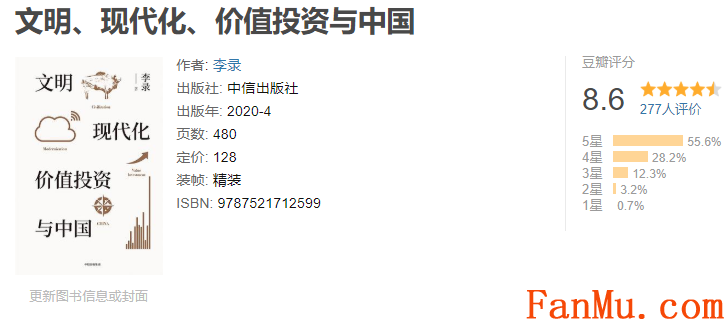
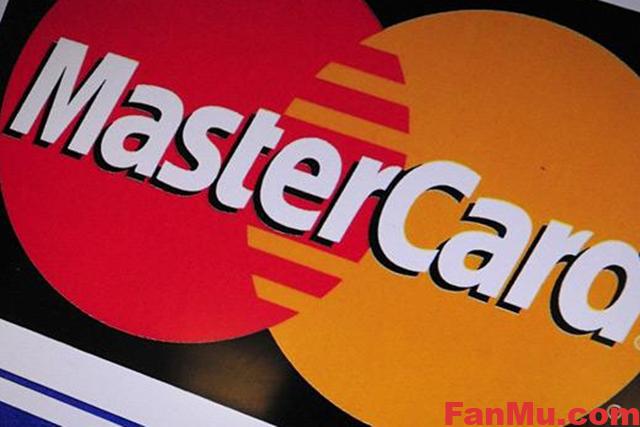
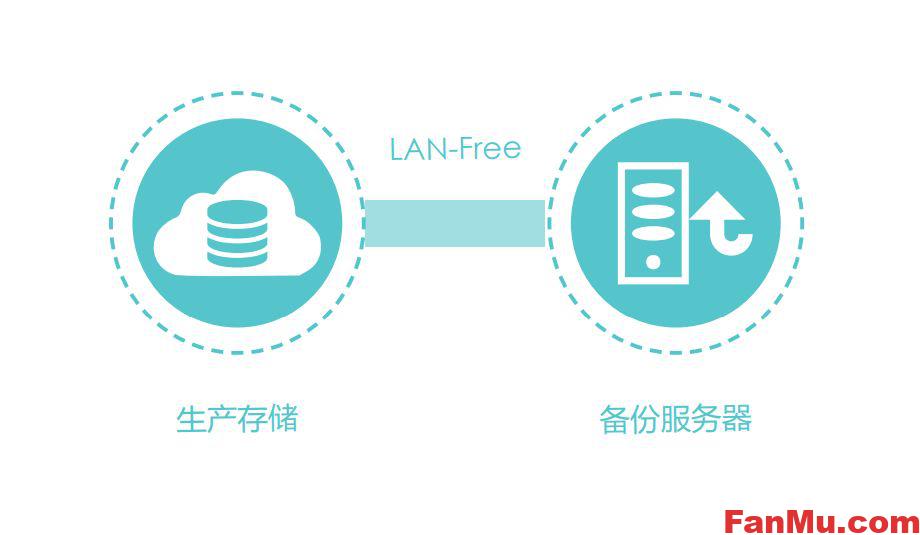

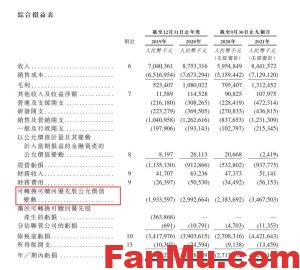
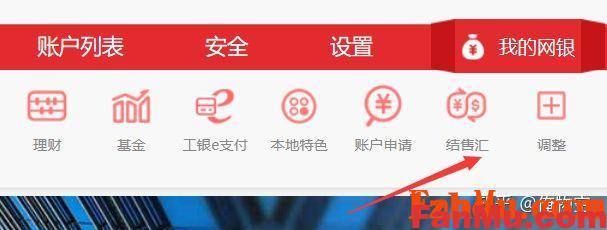

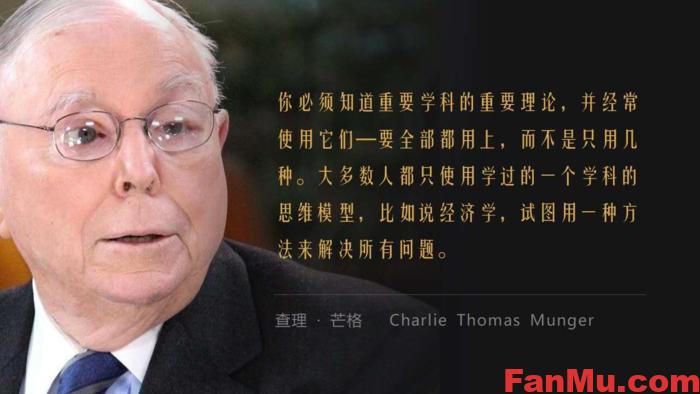
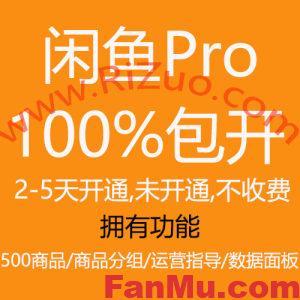
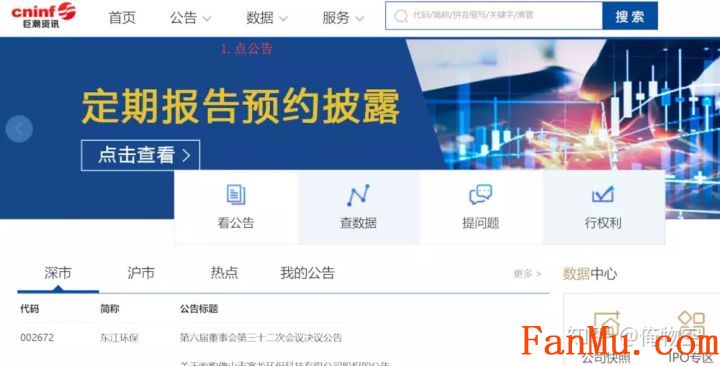
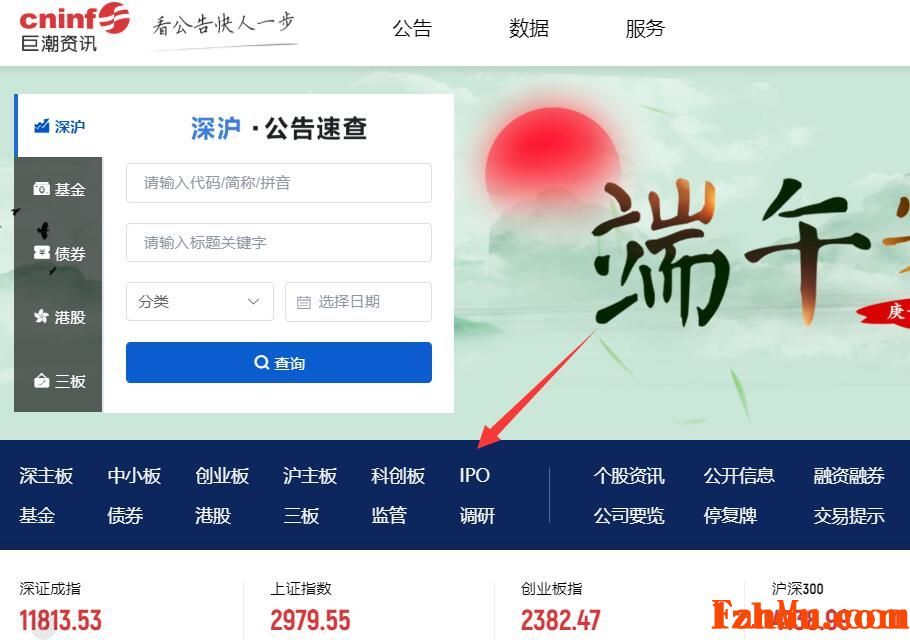
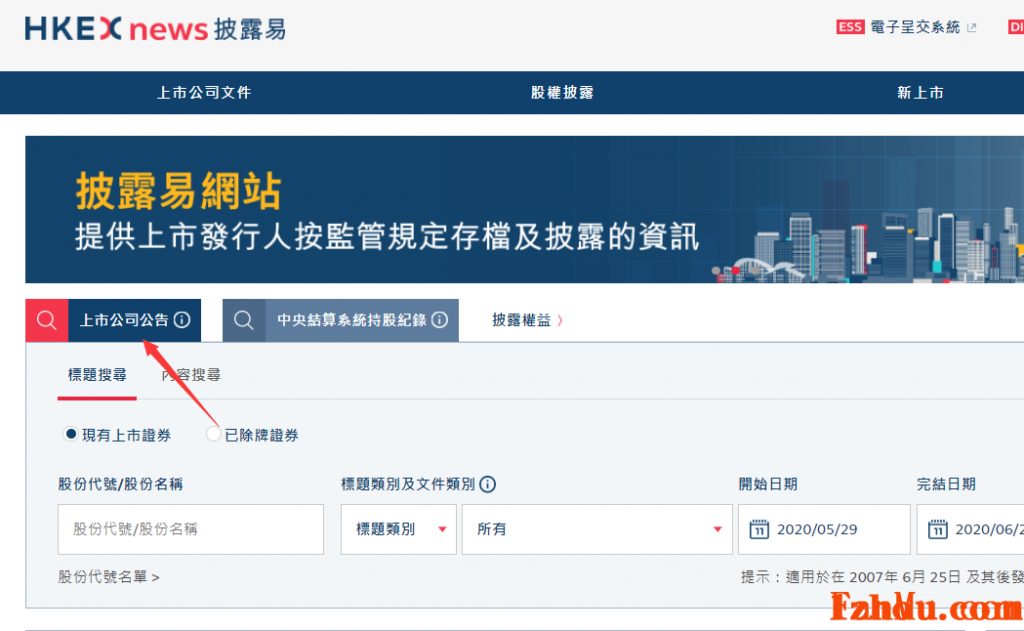

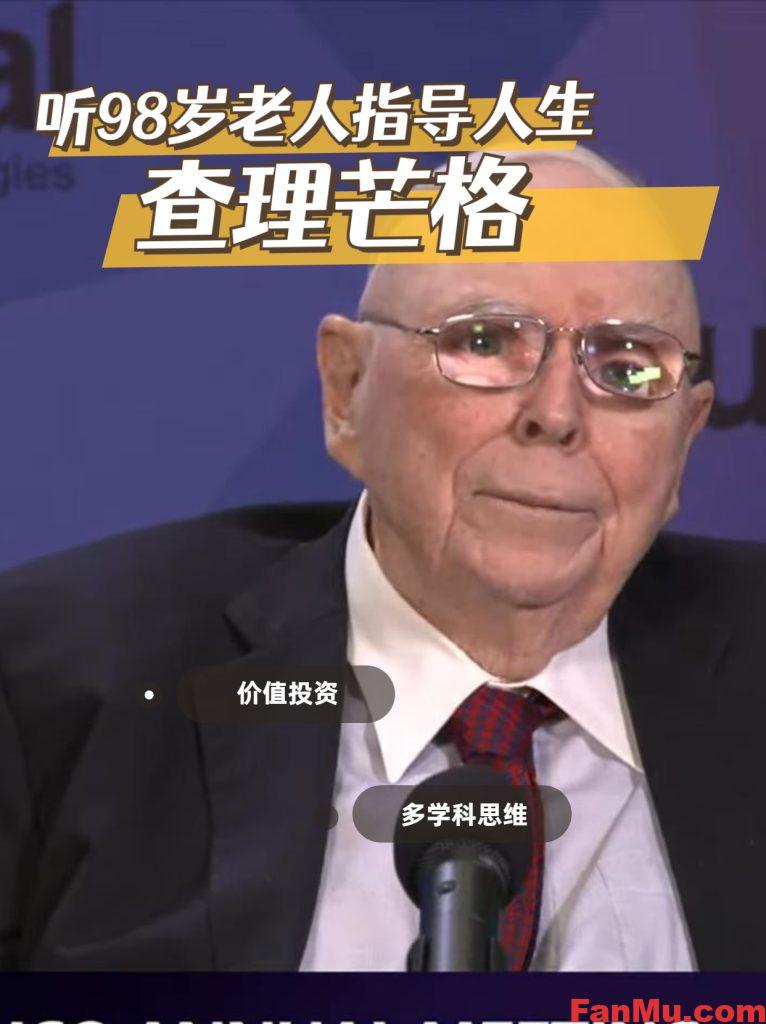
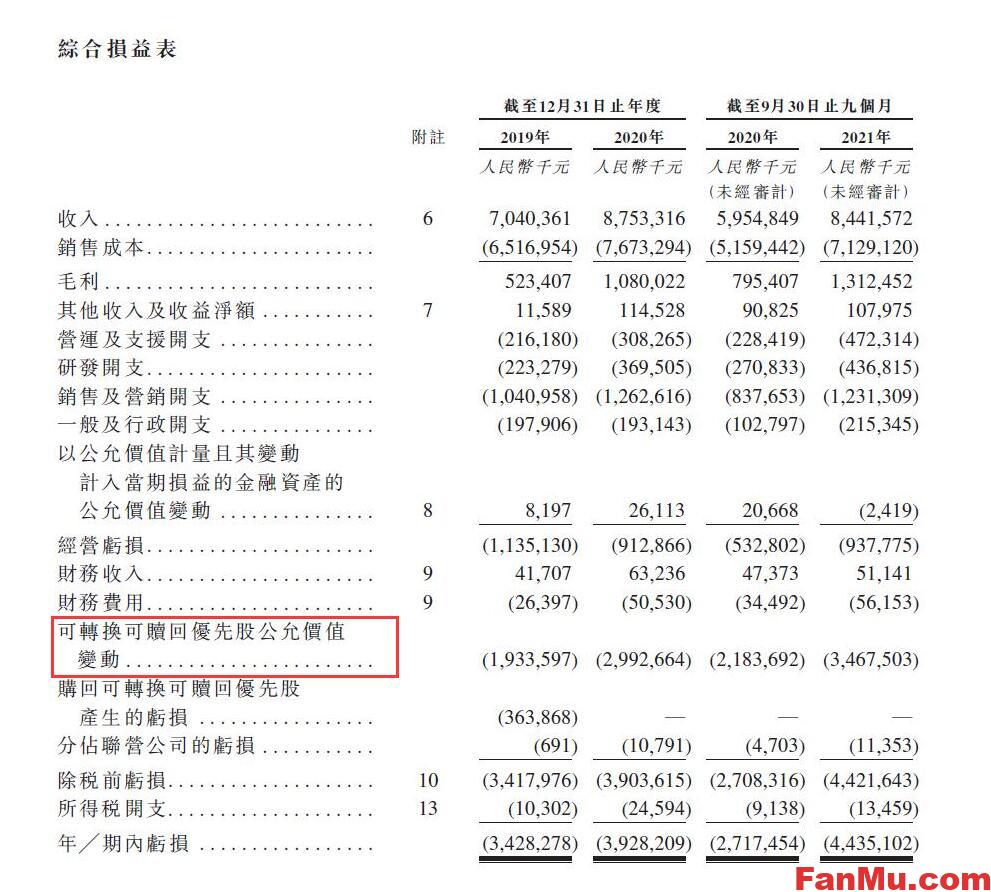


暂无评论内容